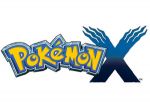Pokemon: Top Five of the Game Series

2. Pokemon Emerald
The third generation of the Pokemon series began with the titles Pokemon: Ruby and Pokemon: Sapphire, after which the joining title for the pair, Pokemon: Emerald, served to bring the best elements of both games into one neat package, which very easily makes the number two slot on the list thanks in no small part to some amazing secondary features.
The games all follow the same basic protocol for the series -- the player in on their coming-of-age rite of passage journey, there are bad guys that must be defeated, and there is a rapidly expanding world of Pokemon-based competitions to be sought out and mastered. The Elite Four must be defeated, the reigning Champion replaced and the world saved.
While new features are the established goal of each new generation, Pokemon Emerald offered a far greater selection than anyone could have expected. The stand-out of them all though was the Pokemon E-Reader and the 83-card set of special event and reward cards that, when swiped through the Reader, added new battles and items to the game.Emerald was far and away much more than simply the joining of the two base games in the third generation however, because while Nintendo and GameFreak accomplished that goal, they also added new features into the game in the form of the Battle Frontier and the introduction of a new Legendary Pokemon that was exclusive to the joining title: Rayquaza, which was in addition to the existing version-based Legendary Pokemon -- namely Latias, Latios, Groudon, and Kyogre -- that remained to be collected.
Unlike the first complimentary pair, which had the player facing wither Team Aqua or Team Lava (depending on the version played) in Emerald the player faced both, and in addition to that, Emerald was compatible with the Pokemon XD: Gales of Darkness for the Nintendo GameCube, which allowed the player to import Pokemon that they might otherwise not be able to obtain into their games!
While the inclusion of expanded trades between titles and the E-Reader System were certainly stand-outs that helped firmly establish Emerald as one of the best game across all of the generations, for many players the change that Emerald engendered on the world of Pokemon is the real establishing factor for its popularity.
That process began with Ruby and Sapphire, and the real-world events that were held both to promote the new battle and tourney programs, but also the events where special Pokemon were released and, in a new twist, the Eon Ticket distribution that allowed the player to utilize the EReader to add a new area to the games. A new area at which a Legendary Pokemon could be obtained.
Following the release of the Eon Ticket, Nintendo offered the Mystic Ticket -- which allows players an opportunity to capture Legendary Pokemon Lugia and Ho-Oh, to round off the ticket-based special events.
Despite being the joining title for its generation -- meaning that gamers could choose to simply buy Emerald and not buy either Ruby or Sapphire -- the fact that Emerald was widely received as the definitive Pokemon game up to then did not diminish the desire to play the other titles in its generation. To the contrary, they were widely viewed as complimentary to Emerald, though that was clearly not the intention of either Nintendo or GameFreak when the three games were published.

For its part, GameFreak viewed the release of Emerald as a chance to correct some of the mistakes that were made in both Ruby and Sapphire, while gamers viewed Emerald as the opportunity to both add new and Legendary Pokemon to their collections.
In the end one of the elements that caused Emerald to both stand-out and to make the top of the list has to do with a function for which it was not created, and yet stands out as a feature for the game and the logic behind its adoption by serious players as the definitive Pokemon title. Which is why those players chose to systematically transfer and collect all of their rare, special, and Legendary Pokemon on to Emerald, effectively making all of their other titles obsolete, and then utilize Emerald as their chosen platform both for real-world events and personal Trainer-vs-Trainer battles.
And that is why Pokemon: Emerald made the Number Two slot for the Top Five of the Series.


1[video][b][/b] [/video]
OK so wow! Good points there! And wow! Strong feelings there!
A lot of this is subjective - obviously - we all are going to like what we like. Personally I found X and Y to be the best yet for me. YMMV
it is confusing to me. you said gen 3 was better than gen 4 then you said said gen 4 was better than all other generations
sorry but x and y were not the best. the problems i had with it were
1. a lot of the pokemon seemed uninspired, i mean really? a key and some diamond rock?
2. the bad guys are so bland and uninteresting, even the main villain lost my interest the first time i seen him
3. the map is huge yet there was very little to do, especially post game, which has been a problem for most games, but at least black and white made an effort with the other half of the island and gold/silver/crystal/heartgold/soulsilver showd that there can be a better post game.
5. why are we getting more friends to go with yet not one decent rival anymore? blue and silver were the best rivals simply because you wanted to beat them to make them suffer, nowadays its like our rivals have to be our friends and it makes it less appealing to beat them
6. mega evolution has no use, if you use it online its a cheap win, if you use it in the game its simply for overkill. it may look cool, but what use is there?
They say that there will be a remake for ruby,sapphire and emerald.
I'm still playing them on my gameboy. Everything after pearl was really trashy
This list is right. No need for Ruby or Sapphire when you have Emerald!
Crystal > Every other Pokemon Game
Gen 2 > Gen 1 > Gen 3 > Gen 4 > All other generations
Here is the new list
what about ruby or saphire????
Good list, very good list! : )